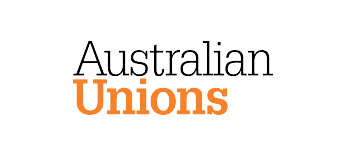Waratah Train update
RailCorp has finally confirmed it will accept the first Waratah train. After a delay of 18 months it’s likely to enter service in July and will initially be operated by the Waratah Crew.
As reported previously in LocoExpress, the RTBU was able to observe test runs to Newcastle and Wyong, as well having one day on this set at the Auburn Maintenance Facility (AMF). As a result this ‘operation ready’ set was found to contain several faults that could potentially pose a hazard to crew.
Since then the RTBU has been negotiating with RailCorp over the resolution of these faults on this train and working towards getting these issues rectified before the delivery of the second train later this year.
The faults of concern include:
 Windscreen visibility issues: For the first train a second driver will be allocated for a limited period. These windscreens, which actually meet the required specifications, will need to be re-evaluated in light of the current issues on the first train prior to acceptance of further sets.
Windscreen visibility issues: For the first train a second driver will be allocated for a limited period. These windscreens, which actually meet the required specifications, will need to be re-evaluated in light of the current issues on the first train prior to acceptance of further sets.
Crew cab doors: Without consultation, audible warnings have been applied to these doors when they are opened or closed, which now poses an unacceptable noise distraction to crew. These doors are also wired not to open when the window is down, once again without consultation, which hinders the crew’s emergency exit. In the short term, the windows will be sealed shut for this set however, in the long term, a software modification will be necessary.
 Passenger De-Trainment Ramp: This device was added to the crew cab by EDI without consultation with the RTBU or OH&S representatives. This poses an injury risk because of its overhanging protrusions at driver head height. A long-term fix is being now being researched, but it’s unlikely to be fixed for this or even the next set.
Passenger De-Trainment Ramp: This device was added to the crew cab by EDI without consultation with the RTBU or OH&S representatives. This poses an injury risk because of its overhanging protrusions at driver head height. A long-term fix is being now being researched, but it’s unlikely to be fixed for this or even the next set.
ETIS computer screens: At this time, these screens give off an unacceptable glare level when in sunlight and do not meet the required specifications. The long-term solution will be the installation of better-quality anti-reflective screens. An anti-glare film has been fitted as a short-term solution on this first train.
Guard’s CCTV screens and Fire Detection Panel: During nighttime running and in tunnel environments, high levels of ambient light are let off by these screens which compromise the driver’s ‘black cab’ environment. This will also require a software change in the long term to enable the blacking out of the CCTV screens. The Fire Detection Panel also needs to be made dimmable to help reduce these ambient light levels.
Wheelchair ramp: This device has the potential to cause noise distraction within the cab and is currently placed next to exposed wiring. RailCorp has agreed that any exposed wiring will be covered prior to this first set entering revenue service. The ramp will remain within the cab due to a pre-existing RailCorp agreement that all new rolling stock would have a wheelchair ramp provided.
Shared cab owing to second cab failure: An alternative draft procedure for this degraded mode of operation has been submitted to RailCorp, which minimises the amount of time this working can occur, owing to the distraction it poses. The RTBU is awaiting a response.
Kick-Out panels: The RTBU requested that these panels be hinged rather being able to be ‘kicked free’. This has been done and is awaiting validation.
Crew platform access: There is still concern regarding the guard’s platform access in some locations, in particular, the city underground. A solution is currently being researched.
Crew training: Training courses have to be updated with new procedures prior to implementation.




